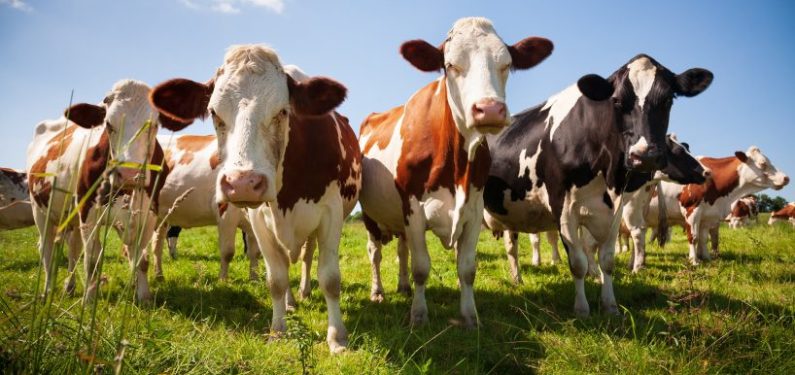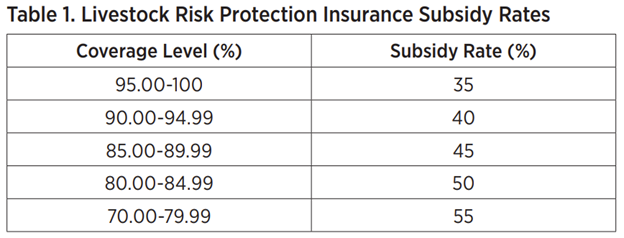Proactive Protection: Bagley Risk Management Tactics
Proactive Protection: Bagley Risk Management Tactics
Blog Article
Comprehending Animals Risk Security (LRP) Insurance Coverage: A Comprehensive Overview
Browsing the realm of animals danger defense (LRP) insurance policy can be a complex venture for several in the agricultural industry. From exactly how LRP insurance coverage operates to the numerous coverage options available, there is much to uncover in this extensive overview that might potentially shape the method animals manufacturers come close to danger management in their businesses.

How LRP Insurance Policy Works
Periodically, understanding the mechanics of Livestock Threat Defense (LRP) insurance policy can be complicated, but damaging down exactly how it works can give clearness for farmers and breeders. LRP insurance coverage is a risk monitoring tool designed to shield livestock manufacturers versus unforeseen rate declines. The plan enables manufacturers to set an insurance coverage level based upon their certain needs, selecting the number of head, weight array, and protection rate. Once the plan is in location, if market prices drop below the insurance coverage cost, manufacturers can submit an insurance claim for the difference. It is very important to note that LRP insurance policy is not an earnings guarantee; rather, it concentrates solely on rate risk protection. The coverage period commonly ranges from 13 to 52 weeks, providing flexibility for producers to choose a duration that lines up with their manufacturing cycle. By using LRP insurance, herdsmans and farmers can reduce the economic dangers connected with fluctuating market prices, making certain better security in their operations.
Qualification and Insurance Coverage Options

When it pertains to protection alternatives, LRP insurance provides manufacturers the adaptability to choose the protection degree, insurance coverage duration, and recommendations that best fit their threat monitoring needs. Protection degrees generally vary from 70% to 100% of the anticipated ending value of the insured livestock. Producers can also pick insurance coverage durations that line up with their manufacturing cycle, whether they are guaranteeing feeder cattle, fed livestock, swine, or lamb. Endorsements such as cost danger security can additionally tailor coverage to protect against unfavorable market changes. By comprehending the eligibility requirements and coverage alternatives readily available, animals manufacturers can make enlightened decisions to manage danger properly.
Advantages And Disadvantages of LRP Insurance
When evaluating Livestock Threat Security (LRP) insurance policy, it is crucial for animals producers to weigh the benefits and negative aspects integral in this danger management device.

Among the primary benefits of LRP insurance policy is its capability to supply protection against a decrease in animals prices. This can assist guard manufacturers from financial losses arising from market variations. Additionally, LRP insurance coverage provides a degree of adaptability, permitting producers to personalize protection degrees and plan periods to match their details needs. By securing an ensured rate for their animals, manufacturers can better manage risk and plan for the future.
One restriction of LRP insurance policy is that it does not protect against all kinds of threats, such as disease outbreaks or all-natural calamities. It is vital for manufacturers to meticulously analyze their private risk exposure and economic scenario to figure out if LRP insurance policy is the best danger management tool for their procedure.
Recognizing LRP Insurance Coverage Premiums

Tips for Making Best Use Of LRP Advantages
Optimizing the benefits of Livestock Danger Defense (LRP) insurance policy requires tactical planning and positive danger monitoring - Bagley Risk Management. To take advantage of your LRP insurance coverage, think about the adhering to ideas:
Routinely Evaluate Market Conditions: Keep notified about market patterns and price fluctuations in the livestock market. By monitoring these aspects, you can make informed decisions regarding when to acquire LRP protection to secure versus possible losses.
Set Realistic Insurance Coverage Degrees: When choosing coverage levels, consider your manufacturing costs, market value of animals, and prospective threats - Bagley Risk Management. Establishing practical protection levels ensures that you are adequately safeguarded without paying too much for unnecessary insurance coverage
Diversify Your Coverage: Rather than depending exclusively on LRP insurance coverage, think about diversifying your risk monitoring approaches. Incorporating LRP with other risk monitoring tools such as futures contracts or alternatives can give detailed protection against market uncertainties.
Review and Readjust Coverage Frequently: As market problems change, occasionally examine your LRP coverage to guarantee it lines up with your existing danger direct exposure. Changing protection levels and timing of acquisitions can help enhance your risk security strategy. By adhering to these suggestions, you can take full advantage of the benefits of LRP insurance and secure your livestock operation versus unexpected threats.
Conclusion
In verdict, livestock threat protection (LRP) insurance policy is a valuable device for farmers to take care of the monetary threats connected with their animals operations. By comprehending just how LRP functions, eligibility and protection alternatives, along with the advantages and disadvantages of this insurance policy, farmers can make enlightened decisions to safeguard their resources. By thoroughly taking into consideration LRP costs and applying methods to maximize benefits, farmers can alleviate possible losses and ensure the sustainability of their operations.
Livestock producers interested in acquiring Animals Threat Defense (LRP) insurance can explore a range of eligibility requirements and insurance coverage alternatives customized to their specific livestock operations.When it comes to protection alternatives, LRP insurance policy offers producers the versatility to choose the protection degree, coverage duration, and recommendations that ideal match their threat monitoring needs.To grasp the intricacies of Animals Threat Read Full Article Defense (LRP) insurance totally, recognizing the variables affecting LRP insurance policy costs is critical. LRP insurance policy costs are figured out by different elements, consisting of the insurance coverage degree selected, the anticipated price of click for source animals at the end of the coverage period, the kind of livestock being guaranteed, and the size of the protection duration.Evaluation and Change Protection Frequently: As market conditions transform, periodically review your LRP insurance coverage to ensure it straightens with your present risk direct exposure.
Report this page